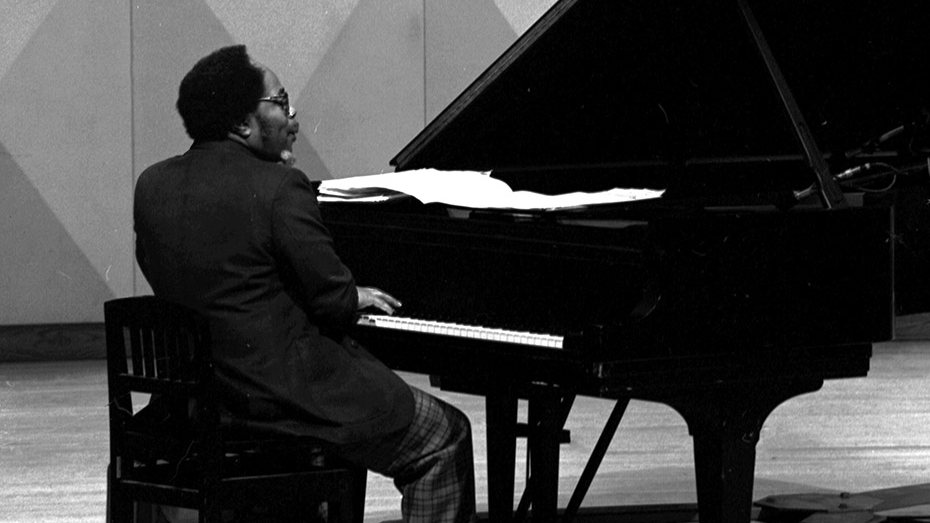I can’t remember the jazz writer who compared Horace Silver to Jean Baptiste Camille Corot on grounds of their respective craftsmanship, but his idea helped inform my appreciation of Silver’s recordings. When I think of jazz pianists in the context of craftsmanship, two lesser-known artists come to mind: Richie Beirach and Sir Roland Hanna. Hanna’s Everything I Love (2002) is astonishing, and the liner notes reveal Hanna just started playing, selecting tunes on the fly, and recording them in first-and-only takes! It’s a marvelous collection, and I especially recommend “You’d be So Nice To Come Home To” for your playlist. His version of Miles Davis’ “All Blues” will please many listeners as well.
MONK.
Where to begin choosing a favorite? Monk’s extensive discography has been exhaustively examined and rated. I own plenty of albums and CDs from this jazz icon. And there’s one disc I would include in a desert-island collection: Monk. on Columbia, from 1964. This recording is the first of his later quartet including Charlie Rouse, Larry Gales, and Ben Riley. What keeps me smiling through listenings close or distracted is the program and its pacing. “Pannonica” is here (two takes), and so is the wonderful, odd “Children’s Song (That Old Man),” and so is a beautiful solo “I Love You (Sweetheart of all My Dreams).” All selections are taken at natural tempos, and the transition from one to the next is satisfying. I think this might be the disc I recommend to the inexperienced listener. The vinyl and CD covers can be different; look for CL2291 (vinyl) or CK86564 (CD.)
A good picture book is nice
A Tree Is Nice (1956) doesn't have a plot; the book implies the hero/ine is any child who likes trees and especially the child who might plant a tree. Udry's delightfully simple subject-verb text—ideas strung together the way a child does—and Simont's charming pen-and-wash illustrations combine to form a beautiful expression of childhood. Notice the book's tall, tree-like format. While A Tree Is Nice has plenty of appeal to adult readers, children can find and remember interesting visual points of interest such as squirrels, fishing, games, swings, doghouses, and shovels. Happily this classic is still in print and easily available.
Night Dreamer
It's hard for me to agree with anyone who thinks Wayne Shorter is not among the most important jazz figures of the 1960s. I prefer him over other candidates because of his important contributions as a sideman, and did any bandleader in the decade, other than Miles Davis, produce evidence that was as consistently excellent? A composer, player, and leader, Shorter participated in many of the most important movements, with the exception of free jazz. His own albums on Blue Note and his recordings with Miles Davis' quintet are proof enough of his high ranking. Another measure, for this writer, is my opinion that Shorter brought out the best in Elvin Jones, which might be blasphemy to those of you who prefer Coltrane and Jones.
Night Dreamer, recorded in 1964, is my favorite from his string of outstanding Blue Note releases. Featuring Lee Morgan, Reggie Workman, Jones, and McCoy Tyner (curiously listed as "Etc." on the cover), the album presents six solid originals, including the familiar title tune and "Black Nile." There are two takes of "Virgo"—both are very good. My recommendation for a playlist is the beautiful "Oriental Folk Song."


